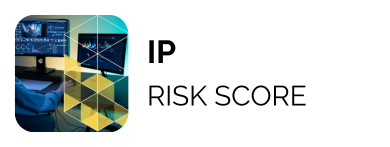
At this very moment, tens of millions of online auctions for ad impressions are happening all over the web. These auctions take milliseconds to complete, happening in real-time as the page loads so the user sees the right ad in the right spot. Real-time bidding (RTB) is the automated auction mechanism publishers and advertisers use to find the fair market value of an ad.
How Does RTB Work?
Ad exchanges, such as AdX, OpenX and PubMatic work with brokers who buy and sell on behalf of the publishers (Supply Side Platforms, SSPs) and advertisers (Demand Side Platforms, DSPs). Like any exchange, brokers bring their client’s orders to the market and execute transactions on their behalf.
Publishers come to the marketplace with the supply of views and advertisers set parameters for their bids as to what type of view they’d be willing to pay what amount of dollars. The ad exchange then runs these split-second auctions to sell the view to the highest bidder.
This ensures publishers sell their views at the highest cost and advertisers pay only what the market is asking for the view.
Meanwhile, for the user, the page experience remains the same but with some added steps they don’t see:
- The end user visits a targeted website.
- In the approximately 100 milliseconds before the page to loads, a live online auction happens for the ad placement.
- The advertiser wins the auction and agrees to pay the publisher a set amount.
- Advertisements appear as the page finishes loading.
Ad Exchanges, DSPs & SSPs
Ad exchanges act as a neutral third-party that provides the infrastructure and price ladder mechanisms for advertisers and publishers. Think of it like a stock exchange in that it allows brokers (DSPs & SSPs) to find the buyers/sellers they’re seeking without having any bias toward one side or another.
Using machine learning, the algorithm is continually recording and learning from transactions, saving market participants time, eliminating human errors and cutting down on paperwork. The best RTB ad exchanges are transparent with the transactions, help prevent fraud, have access to large and diverse networks and allow for advanced reporting.
DSPs
Advertisers and marketers looking to enter the world of real-time bidding should begin by partnering with a Demand-Side Platform (DSP). These platforms streamline the complex process of purchasing and managing ad inventory across larger advertising exchanges. With a DSP, users can create and adjust real-time bidding campaigns, dynamically set impression prices, and gain greater control over their digital advertising strategies. In return for these robust capabilities, advertisers pay a modest fee to the DSP software provider.
How DSPs Provide Value
Aside from being the conduit to the ad exchange, DSPs enable advertisers to finely tune their spend:
- Create targeting profiles
- Choose the targeted audience you want to reach
- Set a budget framework
- Connect to other major DSPs
- Prioritize the publisher websites best fit for your specific campaign
- Blocklist detailed ad inventories
- Set a budget limit spend per day
- Set up KPIs
- Create custom parameters
SSPs
On the publishers’ side of programmatic advertising, the Supply-Side Platform (SSP) serves as the counterpart to the Demand-Side Platform (DSP). SSPs manage digital advertising inventory and facilitate integration with the real-time bidding ecosystem.
When a user accesses a publisher’s webpage, the SSP automatically initiates communication with the ad exchange. Technically, the SSP transmits a bid request containing encoded information about the user and the publisher’s minimum acceptable price for ad placement. This bid request essentially signals the availability of an advertising opportunity and solicits potential advertiser interest.
How SSPs Provide Value
SSPs have several features geared toward maximizing the revenue per view of a website. Their success is directly tied to their publisher’s success so they are motivated to get the most out of the ad exchange experience. Some common and key features include:
- Revenue optimization
- Inventory management
- Ad quality control
- Reporting/analytics
- Optimizing fill rates
- Price floor controls
Real-Time Bidding Big Picture
Real-time bidding’s share of advertising is now three times bigger than it used to be three years ago, as stated by Statista, concerning countries such as the UK, China, and the US. Predictions are even wilder than this, with $29 billion anticipated for 2025. So, yes, real-time bidding is a big deal happening right now in advertising. It’s clear real-time bidding is part of the future of advertising, where all the parts involved, from media buyers, brands, and agencies can find their perfect optimizations to work.
Real-time bidding is an interconnected ecosystem bringing together all the parts involved in the buying and distributing ads. Now, let’s break real-time bidding into pieces and see how these parts get “the machine” to work.
Apart from cutting down on a lot of paperwork, time, and negotiation energy, RTB has revolutionized the world of online advertising by providing marketers with the only possibility to purchase ad impressions one by one. If you’re an advertiser, this offers you better control over your budgets and marketing campaigns and more concise campaign reports that show precisely what works and what doesn’t.
For more information about securing your real-time bidding campaigns, contact Fraudlogix.



